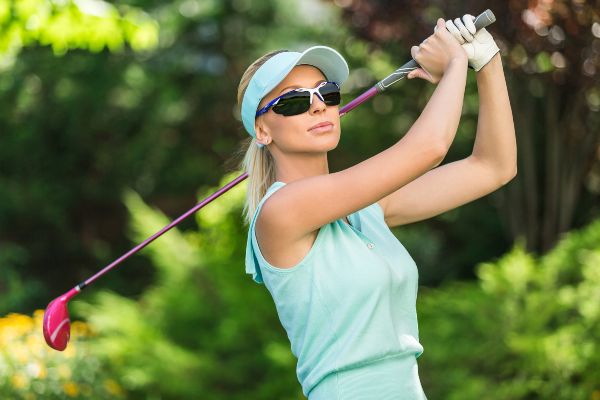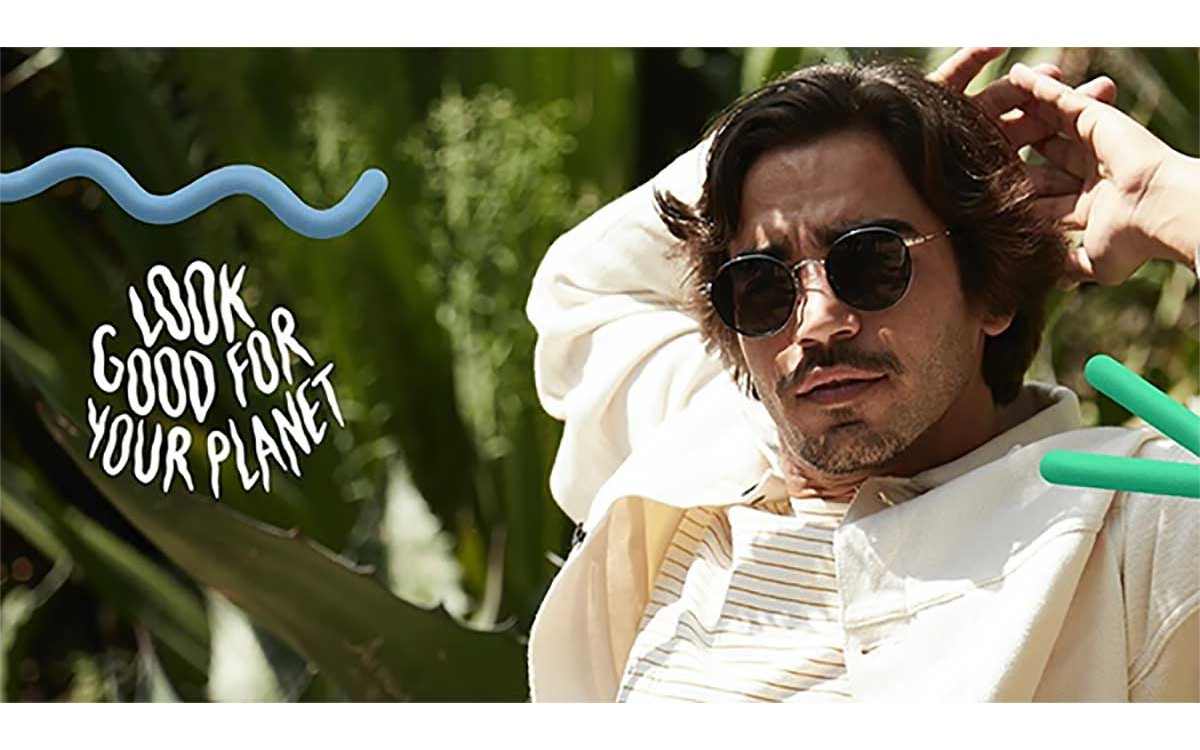“Golf is deceptively simple and endlessly complicated; it satisfies the soul and frustrates the intellect. It is at the same time rewarding and maddening – and it is without a doubt the greatest game mankind has ever invented.” Arnold Palmer.

Have you ever wondered why golfers often have colored sunglasses on when they’re preparing to putt? Well, there are different types of lenses in sunglasses to help you see golf balls in flight. And, depending on the lens color, they will impact how players see the ball, the green golf course and the eighteen different holes.
That’s right. When you’re out on the greens, harsh sunlight, cloudy mornings, and every weather in between can affect your vision. So how do you counteract this disadvantage to your game? Lens colors center around features like color enhancement, contrast, and trusted vision. This is why the right colored lens can ensure that glare, distortion, and other factors don’t compromise your game. This is also why every player needs a set of good golf sunglasses.
While golf is a game of misses, don’t miss out on good chances because of your sunglass lenses. Here is a quick guide on the best lens colors for golfing enthusiasts.
The Best Lens Color for Golf
Lenses with a good color contrast help the players maintain focus, as well as improve the players precision and coordination during a game on a sunny day. Choosing the best sunglass lens color for golf is an important decision.
Browns
Many beginners and pro golfers prefer bronze or brown-hued sunglass lenses on sunny game days. These warm and clean tints are popular as they make the striking colors of the golf course pop. The earthy hue also reduces glare, giving a sense of ease and comfort to your eyes when you're trying to concentrate on the ball, especially when it's against the clear blue skies.
Within brown, amber and hazel shades are a popular choice of lens colors for active golfers. These colors boost contrast but reduce color distortion, enabling you to look down at the ball comfortably for extended periods.

Rose
Rose-colored lenses are a universal favorite. The tint eliminates color distortion and clears the red and yellow tinges in the greens, giving you clearer visuals. You may find that your surroundings have a rosy tint, but the ball and course will always be the parts you see prominently. In many ways, this color works just like the browns. It enhances the contours of the course while affecting your depth perception positively.
Gray-Green (G15)
Not sure what to expect with a gray green lens color? Also known as G15. Think Ray-Ban’s classic aviators. Ahh, that gray green color.
Considered a neutral color, the G15 lens is great for the sunny outdoors as it doesn’t change true colors. So you can expect these lenses to protect your eyes from the sun’s harmful rays and glare. However, green-gray tints aren’t ranked high by pro golfers as their benefits don’t extend beyond a mild increase in contrast.
Black or Grays
Grays or Blacks sunglass lenses are perfect for when you want to shield yourself from bright light. They’re also equally efficient on dark, overcast days. Most people pick black as they also offer anti-fatigue benefits for eyes and true color perception.
What To Avoid
Blue
Blue is a color you’re better off without on the golf course unless you’re a spectator. Blue lenses will block glare and protect your eyes from the sun’s UVA and UVB rays. They’re also great for foggy or misty mornings. But the benefits to golfers stop there. Blue isn’t what you’d consider a golf-specific lens, as you need a color that will block out blue light.
Beyond Color
When it comes to golfing gear, sunglass lenses are just as important as golf clubs. After all, the perfect swing without perfect vision will not get you very far. When looking for sunglasses that suit you the best, you must also consider characteristics that stretch beyond color. Consider the following before your next purchase:

Polarized Sunglasses for Golf
Polarized sunglasses are highly popular for their ability to minimize glare, especially when it bounces off surfaces like water, chrome, tarmac, etc. When on the greens, glare is not quite an issue unless you spend a lot of time near the sand traps and water hazards. Additionally, most golfers don't use polarized lenses as it prevents them from reading the grass, and it interferes with depth perception.
However, if you have light-related sensitivity, then polarized lenses will work wonderfully for you. They will allow your eyes to relax, reduce strain and ensure you don't squint while concentrating on the ball.
If you don’t have polarized lenses in your sunglasses, upgrade them. Get yourself multiple pairs in different colors that you could wear throughout the year.
Custom Sunglass Lenses
To golf like a pro, you need custom sunglass lenses on the go because sometimes, it’s hard to decide which color lens will give you the slight advantage you need. Sunglass replacement lenses are handy on any given course. Most golf-specific sunglasses come with a replacement feature wherein the lenses can be interchanged into the frames depending on the requirement. The famous brand, Oakley, offers a wide range of plastic-framed sunglasses that allow you to swap lenses in and out easily. Our website has more information on installation steps should you be curious.

Frames
When considering frames, keep the following in mind:
- Weight: The more lightweight the frame, the more comfortable the sunglasses will be.
- Grip: Get frames that offer great grip. After all, sunglasses are an investment, and without good-quality rubberized nose pads and temple grips, you're bound to lose them when you look down or swing.
- Temples: Pick straight or skull temples as they'll fit comfortably under your flat, driver, or ivy caps.
- Peripheral Coverage: Opt for sunglasses that offer you optimal peripheral coverage via a full wrap (8-base). In doing so, you’ll avoid light entering from the periphery and affecting your vision.
- Rims: Since you look down at the ball quite frequently, semi-rimless will prevent the lower rim of your sunglasses from obscuring your vision.

In A Nutshell
Whether it’s a sunny day out on the course, an overcast one, or there’s rain, choosing the appropriate colored lens can help you see better and play with clarity. Color lenses give you an undeniable competitive advantage and an incredible boost in confidence.








